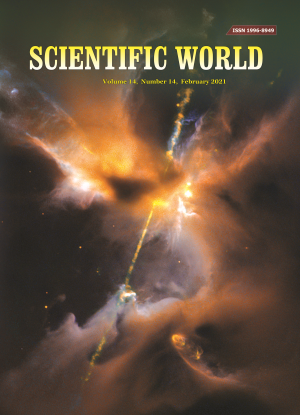Characterizations Of Water Quality In West-Seti and Tamor River Basins, Nepal
DOI:
https://doi.org/10.3126/sw.v14i14.35021Keywords:
Water quality, Geochemical composition, Hydrochemical facies, Glacier-fed basinsAbstract
This study presents the geochemical composition and water quality of waters in the West-Seti and Tamor River basins in Nepal Himalaya with the aim to reveal their hydrochemical characteristics and to evaluate the water quality. Water samples were collected from 18 sites of the rivers in the pre-monsoon season and analysed the physicochemical parameters to characterize their quality. The parameters- temperature, pH, conductivity, and total dissolved solids were measured in the field, while the major ions (Na+, Ca2+, Mg2+, Si4+, SO42−, NO3−, HCO3−, Cl−, and F−) were analyzed in the laboratory. Overall results of physicochemical parameters revealed that the ionic strength is much distinct; however, the waters are chemically pure in both the river basins with very less electrical conductivity (<250 µS/cm) and total dissolved solids (<120 mg/L). Bicarbonate (HCO3−) has a significant correlation with Ca2+ and Mg2+ suggesting carbonate rock weathering as the dominant geochemical process in both of the basins. The concentrations of Ca2+, Mg2+, and HCO3− in the water of the West-Seti is relatively higher than the waters in the Tamor River basin. Mostly, the geochemical facies of both the rivers are characterized by the Ca-Mg-HCO3- type (88.9%), with dominant carbonate dominated lithology. However, hydrochemical facies clearly suggested spatial discrimination between two basins with dominant geogenic signatures as Ca-SO4-Cl type water facies are also reported from the Tamor River basin. The results exhibited that the concentrations of measured parameters were relatively very low and within the WHO guideline values and currently under a safe level of the water quality for drinking and ecosystem health perspectives; however, further in-depth research is recommended in the periodic basis to assess traces of climate change imprints, and anthropogenic interferences for more consistent and reliable dataset. The findings of this study could be useful for the water quality management in the glacier-fed Himalayan River basins.




